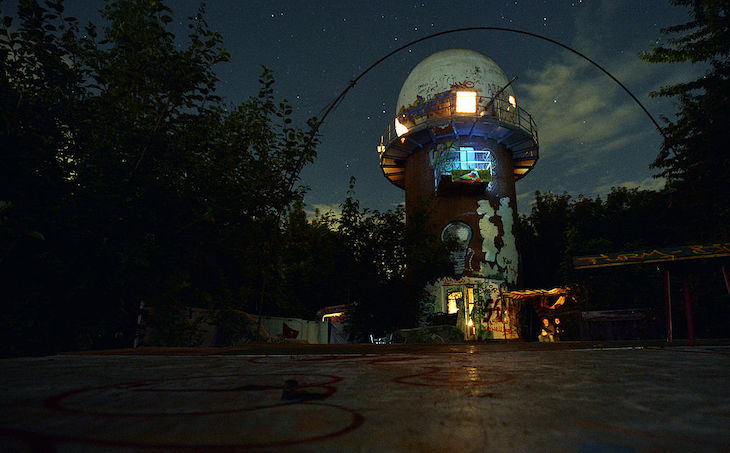There’s no better city for the history buff than Berlin. Napoleon, Stalin and Hitler’s armies have marched through. Albert Einstein taught in the city. Karl Marx studied there. Lenin journeyed across the city on his way to change Russia – and the world. The Brothers Grimm dreamed up their stories there. Mankind’s worst genocide was hatched in the city. And the world nearly ended there when Russian tanks faced off against the Americans during the height of the Cold War. The city carries the ‘stigmata of Prussian militarism, Weimar decadence, Nazi evil, Stalinist oppression and tawdry capitalist excess,’ as Jan Morris put it. For the first-time visitor to Berlin, things can be a little overwhelming: having encountered the city in the pages of books for years, it’s hard to know where to start. The bad news is that you’ll never ‘do’ Berlin in 48 hours. But with a bit of planning ahead, it’s possible to get a good flavour of Berlin’s history in a weekend.
Berlin has more museums (170 or so) than rainy days each year (106 on average): in the city centre, the Topography of Terror will linger long in your memory after you’ve left. Built on the site of the Gestapo offices on Niederkirchnerstraße, it offers an unsparing display of what went on under the Nazis – and the brutal fate of those who tried to stand in their way. The exhibition also borders one of the largest surviving sections of the Berlin Wall.
It’s worth making a beeline for the Jewish Museum on Lindenstraße, not only for the exhibits inside but for the building itself. The architecture is intended to replicate for the visitor what it might have felt like to be a Jew living in Berlin during the darkest times of the 20th century. It sounds like it shouldn’t work but, as with the Memorial to the Murdered Jews of Europe on Cora-Berliner-Straße, it does. It’s a building you will never forget.
For visitors to Berlin, it’s hard not to be struck by Germany’s willingness to face up to its past and the crimes committed by ordinary men, as Christopher Browning put it. Of course, there were some Germans who did stand in the way of the Nazis: The Museum of German Resistance provides a fitting memorial to these brave men and women. The location will be familiar to those who have seen the film Valkyrie: the movie was shot here on the site of the botched coup against Hitler of 20 July, 1944. Those who tried to kill Hitler suffered agonising deaths: they were hung slowly from meat hooks and had their executions filmed. You can find the museum which tells their stories in the Bendler Block in Berlin’s Mitte district.
While there’s no need to plan ahead for most of Berlin’s museum, one ticket that is essential to snap up in advance is to the dome of the Reichstag. To avoid the long line, you should book a (free) ticket in advance of your visit. To make the most of your time in the city, it’s worth ensuring you stay slap bang in the centre. Courtyard Berlin City Center on Axel-Springer-Straße comes highly recommended. The hotel – which has just been done up and is the first property to showcase Courtyard by Marriott’s new ‘European Spirit’ signature design – is perfectly placed in the Mittee district. It’s close to all of the key sights, but quiet enough at night that you can get a good night’s sleep after a busy day exploring. The breakfast is fit for a kaiser. And, while Berlin is compact enough that you are best exploring the city on foot, the hotel is located just a few hundred yards from the u Bahn station at Spittelmarkt.
In the city itself, there are a few duds you should skip: Checkpoint Charlie feels gimmicky; and the Trabi safaris – which offer you the chance to drive a Soviet car through the streets – are expensive and hardly fun if you’re the one driving.
As with many European capitals, there’s no shortage of good walking tours: one of the cheapest is the Rude Bastards Tour of Berlin – yes, that’s really what it’s called – which offers a good brief introduction to some of the more famous sights in the city alongside a dollop of politically incorrect humour. Berliner Unterwelten is a non-profit organisation that organises tours of underground Berlin, including of a Cold War bunker and an escape tunnel under the Berlin Wall – the only one which can still be visited today.
Nathaniel Flakin’s excellent Revolutionary Berlin contains nine detailed walking guides around the city. The berlinHistory app – which has photographs showing what different locations around Berlin looked like in decades gone by – is also a wonderful resource for your first (or 50th) visit. If you have a vivid imagination – and a particularly understanding spouse – you should grab a copy of the Berlin Battlefield Guide to guide you through the streets. There might not be much to see but the book’s routes are an indispensable guide for finding historically significant spots that you won’t hear about in Lonely Planet. One of the most striking is Moltkebrücke: today it’s a peaceful route over the Spree; in 1945, it was the scene of the bloody final clash between the Soviets and SS. Keen history fans might also find Platz des 4 Julie interesting: yes, it’s a big stretch of asphalt; but it gives a vision of what Berlin might have looked like if Albert Speer had his way. This area is one of the few segments of the Nazi ring road network that was ever actually built. Videos by the British tour guide Jonny Whitlam are also a fun resource for quirkier tidbits about Berlin’s past.
Of course, Berlin’s history is such that the museums can feel a bit overwhelming. Rather than inure yourself to the horrors of what unfolded in this city, if you’ve got a few hours free you should do as the Berliners do at the weekend – and head to the forest. A 20-minute train ride will transport you from the heart of the city to Grunewald: a forest where wild boar roam and you can wild swim in the beautiful Grunewaldsee.
Two of Berlin’s most interesting landmarks are nearby. Rising out of the woods outside Berlin is a devil’s mountain. The Teufelsberg, which covers a Nazi college designed by Albert Speer, is made of rubble from the ruined city. Dumped in the years after the end of the Second World War, this debris formed a hill that served as the perfect location for a U.S. listening station during the Cold War. What the US spies based here actually did remains shrouded in mystery, but today you can visit what’s left. If you’re feeling brave, a rickety metal staircase takes you to the top: from where you can enjoy wonderful views of the city and the surrounding forest. Teufelsberg is also within walking distance of Berlin’s Olympic Stadium. The brutality of the Russian onslaught on the city meant that many of the buildings that would have been familiar to the Nazis didn’t survive: the Olympic Stadium is an exception. The fascist architecture is unmistakable – and marks a chilling reminder of this city’s dark past and it’s rebirth as a vibrant, brilliant city.
Room only at the Courtyard Berlin City Center is available from £113 per night for Marriott Bonvoy members, based on two people sharing a Deluxe twin bed guest room, including breakfast







Comments